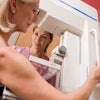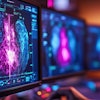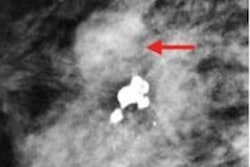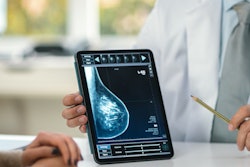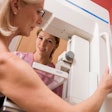
Radiologists are interested in using artificial intelligence (AI) when it comes to detecting and diagnosing breast cancer from mammograms, but only if it meets certain preferences, suggests a study published August 13 in the Journal of the American College of Radiology.
A team led by Nathaniel Hendrix, PhD, from Harvard University found that breast radiologists want to use AI for cancer detection when sensitivity and specificity are balanced and when AI markups were displayed after they had completed their independent review.
"Our findings ... suggest that most radiologists are highly likely to express the intention of adopting AI-based screening mammography decision support tools for breast cancer detection and future breast cancer risk prediction," the Hendrix team wrote.
Several AI-based software applications for mammography interpretation tools have recently received clearance from the U.S. Food and Drug Administration and are now available in the U.S. However, radiologists' attitudes toward AI-based software may be affected by prior experience with conventional computer-aided detection (CAD) software, which failed in large population studies to replicate benefits seen in early reader studies, according to the researchers.
Hendrix and colleagues wanted to better understand the attitudes and preferences of radiologists for AI-based screening mammography decision support. They interviewed radiologists to identify attributes that were important to them. From there, the team developed a discrete choice experiment to examine how these attributes may impact the adoption of AI-based tools among radiologists who regularly interpret mammograms.
"In our discrete choice experiments, we sought to identify the key attributes driving radiologists' preferences for AI-based mammography decision support tools designed for breast cancer detection and future breast cancer risk prediction," they wrote.
After inviting 150 radiologists to participate in the survey, the researchers received responses from a total of 66 radiologists from six diverse practices in eight states. Overall, 46% to 60% of respondents reported intention to adopt any of the AI tools presented in the study. Meanwhile, 26% to 33% approached AI enthusiastically but were discouraged if the features did not align with their preferences.
The team also found that radiologists were more interested in AI for cancer detection when sensitivity and specificity were balanced (94% sensitivity with less than 25% of examinations marked), with a probability of 95%.
Radiologists were also most likely to opt for AI tools without workflow customization or tools that prompt double-reading of high-suspicion examinations (93% probability). Along with that, radiologists preferred that AI markup appeared at the end of the hanging protocol after radiologists completed their independent review (92.5% probability).
For AI-based risk prediction, radiologists preferred AI models using both mammography images and clinical data (51% probability). The authors wrote that their results show the short-term uptake of AI technology for breast imaging will likely depend on how well its functionality aligns with the preference of radiologists.
"In particular, radiology practices can improve adoption of AI by selecting decision support tools that meet the needs of dissuadable users," they wrote. "While intention to use AI is largely defined by preexisting attitudes in the other groups, dissuadable users' intentions vary widely based on tools' attributes."
The team added that supporting this group is "essential" to achieving a large majority of users within a healthcare practice who intend to use AI during breast cancer screening.

